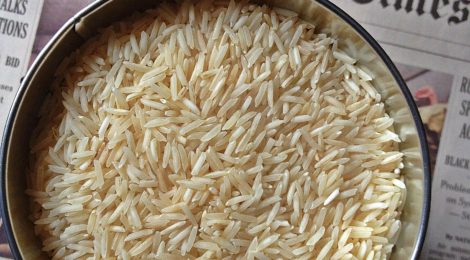
Indian Cooking 101 – Recipe #1: How to make rice perfectly
Indian Cooking 101 – our first lesson will focus on how to make rice perfectly. No rice cooker necessary.
Objective:
-
Learn the ratio 1:2 when making rice on the stove, which is 1 cup of rice requires 2 cups of water
Over the years, countless friends and acquaintances have asked me how to make foolproof rice. When we lived in Boston, my downstairs neighbor Carrie owned the fanciest rice cooker I’ve ever seen, but somehow, her rice always ended up undercooked or burnt on the bottom. She’s a foodie and has traveled Asia, even taking a Thai cooking class, but making rice well eluded her and was one of the first things she asked me to teach her. Of course I own a small rice cooker as well, but it’s always good to know how to make rice the old school way. On the stovetop. In this post, I will show you exactly that. All you will need is rice, water, a small saucepan, and my directions below and you’ll get that fluffy, pillowy rice that we all dream about.
In my family, we make a variety of different rices on a regular basis — long and short-grained Indian varieties (basmati, patna, sona masoori); Thai jasmine rice; brown rice; black rice; Japanese and Chinese rice; Italian arborio rice for risotto. You name the rice, we’ve probably made it at home, never mind eaten it. Rice is a major staple in India and throughout Asia. China and India are the largest rice producers in the world, and have long been the largest consumers as well, but today, many countries including North America consume rice on a regular basis. Brown rice (which, we’re often told to eat along with salmon and broccoli) is considered a whole grain, and it’s gluten-free so appeals to lots of different people with diet restrictions.
How to make rice perfectly
Serves 4
Ingredients
- 1 cup raw basmati rice
- 2 cups cold water
Preparation
- Combine rice and water in a small saucepan (make sure you have a matching lid, very important)
- Place over burner with the lid on and bring it to a boil.
- As soon as it’s boiling, reduce the heat/flame to the lowest setting (if you’re using an electric burner, it may be medium to medium-low). The rice should continue to bubble ever so gently (the heat/flame shouldn’t be so low that the water is flat and unmoving). Cover the saucepan with the lid on an angle, leaving a small space for air to escape (this is why rice cookers have that tiny hole on top of the lid, to allow the air to escape whilst the rice is cooking).
- After 10 minutes check your rice by doing the following: remove the lid and gently tilt the rice on an angle (see photo below) to see how much water remains. Do this very slowly and gently folks, no need to rush. Perfection takes time. There should be 1/4 cup of water remaining. Place the lid back exactly as you had it before and step back.
- After another 10 minutes check your rice again by doing the same thing, tilting it on the side. By now the water should have completely evaporated and you should be able to tilt it and only see fluffy grains of cooked rice. If not, if water remains, put it back on the burner. If it’s done, turn off the burner, put the lid back on, and remove from heat for 2 minutes to let it settle.
- Fluff the cooked rice with a fork and serve immediately. If you’re not going to eat it right away, transfer the rice from the saucepan to a larger container so it retains its fluffiness.
Tips & Tricks
Keep these things in mind to ensure your rice comes out perfectly:
- Ratio of rice to water. When making long-grained basmati rice, the ratio is 1:2 as described above. This ratio slightly changes when you use other types of rice and/or a rice cooker. For instance, when I make basmati rice in my rice cooker, I add 2.5 cups of water. Be sure to read the package of rice you are using to confirm the correct ratio of rice to water.
- Don’t disturb the rice by constantly stirring it or lifting the lid. Do not, under any circumstance, keep stirring the rice OR lifting the lid a hundred times while it’s cooking. This will only torment the rice and it will end up either undercooked or overcooked. You’re only allowed to touch it at the end when it’s beautifully cooked, whereupon you can fluff it with a fork.
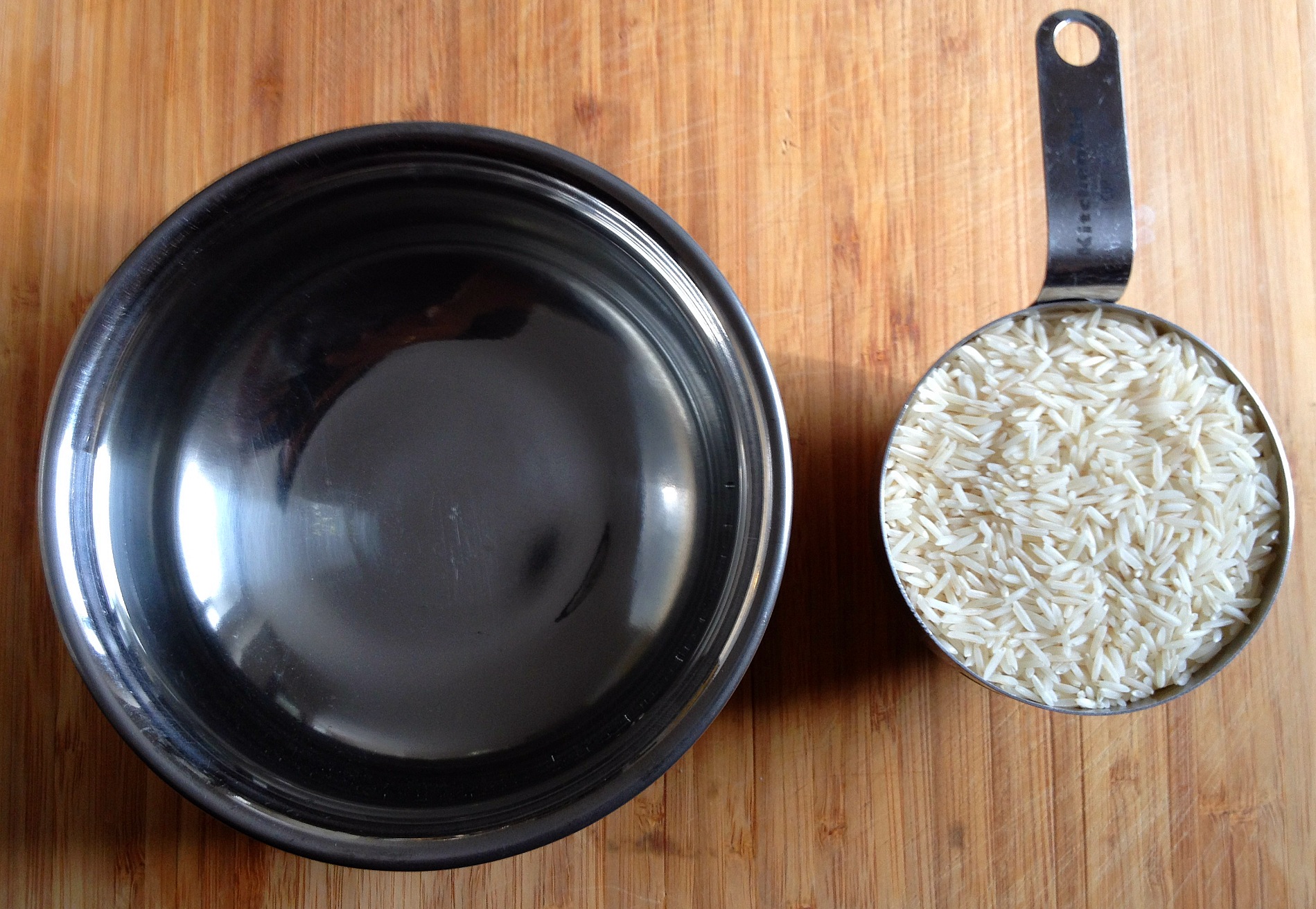
One cup of basmati rice + two cups of water = the perfect rice
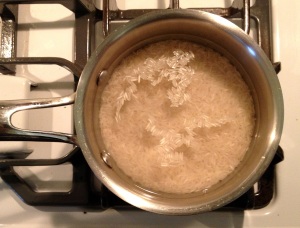
Combine the rice and the water in a small saucepan on your stovetop
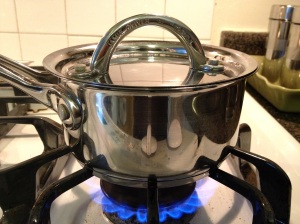
Be sure to cover with a lid that fits snugly and bring to a boil
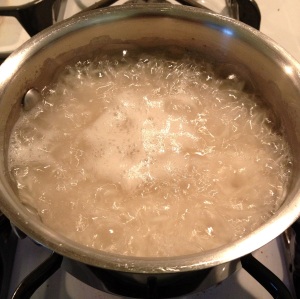
Make sure you keep your eye on it and that it comes to a full boil
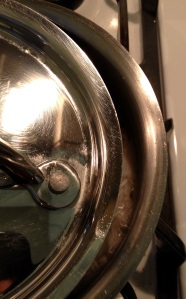
Once it’s boiling, reduce the heat to the lowest flame or to medium-low on an electric stove and make sure the lid covers most of the pot on an angle, but leave a small space for air to escape, as shown here
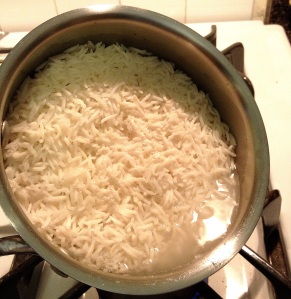
After 10 minutes, tilt the pot to see how much water remains as show here
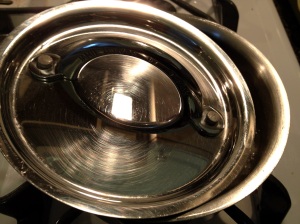
Put the lid back in the same angled position as before

After another 10 minutes check it again by tilting it almost at a 90 degree angle — if no water remains you know it’s done
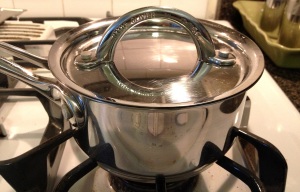
Turn off the heat and cover for 2 minutes to let things settle
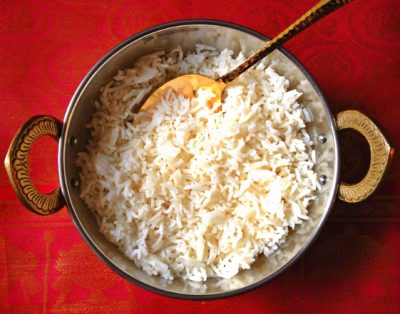


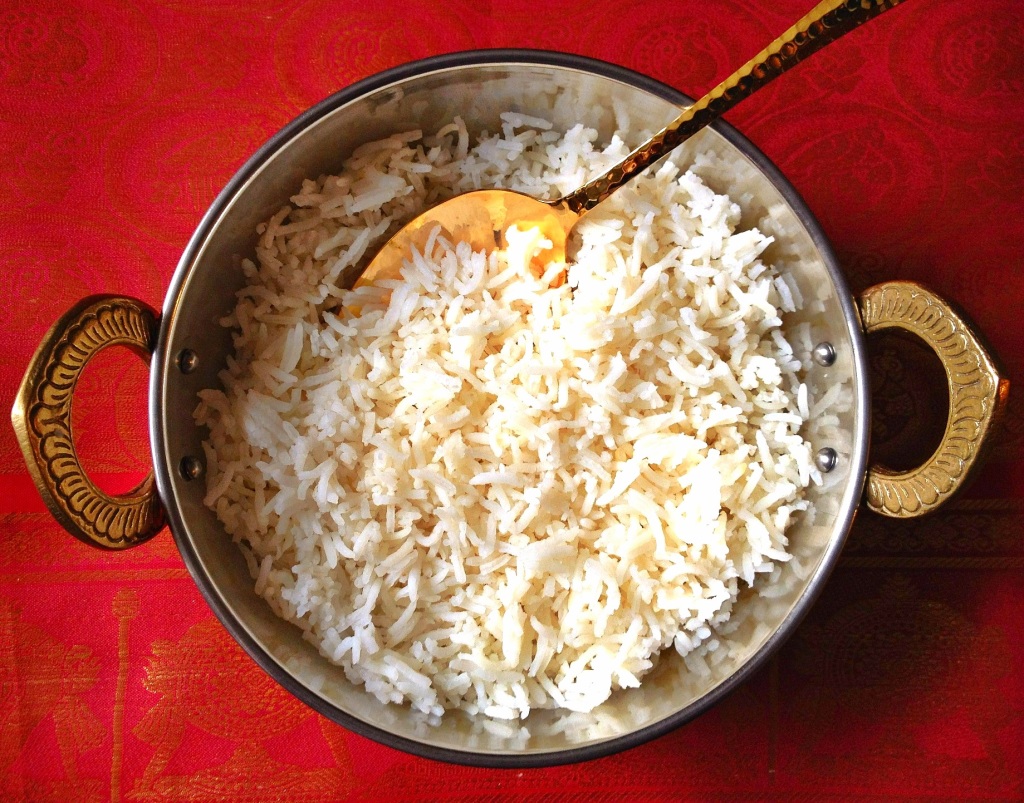

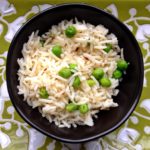


This is so simple and effectively taught. Thank you 🙂
Hello Jigar!
Thank you, we are so happy to hear this. You’re most welcome. Let us know if you make anything from Big Apple Curry, we would love to hear about it and see any photos!
With warmest wishes,
Ina
I tried your tips and they worked, thank you. I linked to this post in my veggie burgers recipe since it uses rice: http://bit.ly/U18QZT. Happy Thanksgiving!
Dear Sarina! I’m pleased the tips for making rice worked for you. Thanks for linking to this post — your veggie burger recipe looks great, I will definitely try it (especially since I only have one tempeh recipe!)
[…] is steaming. (Want to know how to cook rice perfectly? Check out Big Apple Curry’s Rice 101 post here. No more sticky rice.) Meanwhile, sauté the garlic and leek in the canola oil on med-high heat […]